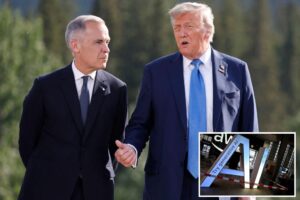
WASHINGTON — NASA’s acting administrator, Janet Petro, is poised to unveil a new “top-level” structure for the agency within weeks, a move that could significantly reshape its operations. However, the appointment of a Senate-confirmed administrator may not occur until next year, leaving Petro at the helm during this transitional period.
During a town hall meeting for NASA employees on June 25, which was not publicly broadcast but later obtained by SpaceNews, Petro discussed potential reorganization strategies. These changes could redefine the agency’s structure and reporting lines, a process that has been underway since March.
“I expect to finalize the top-level structure for this agency within weeks,” Petro stated. She outlined three potential organizational models: maintaining the current mission directorates, adopting a “center-centric” approach focused on field centers, or a “product line model,” though specifics on the latter were not provided.
Reorganization and Strategic Shifts
The proposed reorganization would primarily affect NASA’s top-level structure, without altering the center level. Petro emphasized that operational details and governance would be adjusted post-structure finalization to ensure each part of the agency can thrive.
One significant shift involves decentralizing functions currently managed at NASA Headquarters in Washington, D.C., moving them to field centers. Petro noted, “We’re considering moving most functions currently being performed in D.C. out to where the work is being executed.” This shift aims to refocus D.C. operations on strategic direction and external partnerships.
Leadership in Limbo
The leadership vacuum persists as the Senate confirmation of a new administrator remains stalled. Initially, Jared Isaacman was expected to assume the role, with a vote anticipated in early June. However, President Trump withdrew his nomination on May 31, a decision linked to tensions with SpaceX CEO Elon Musk, an advocate for Isaacman.
Petro will continue her interim leadership, potentially extending into the next year. NASA Chief of Staff Brian Hughes remarked, “It’s hard to imagine it happening before the next six months, and could perhaps go longer.” The administration has yet to announce a new nominee, despite Trump’s pledge for a “Mission aligned” candidate.
Budget Constraints and Workforce Concerns
Budgetary issues dominated the town hall, with NASA’s fiscal year 2026 proposal suggesting a nearly 25% reduction in the agency’s budget. This includes significant cuts to science and space technology funding and proposes reducing NASA’s civil servant workforce by a third, approximately 6,000 positions.
NASA leadership defended the budget as part of broader governmental fiscal restraints, citing the national debt of $36 trillion. Acting Associate Administrator Vanessa Wyche highlighted the need for strategic partnerships to maximize resources.
Petro reassured employees about the agency’s scientific endeavors despite budget cuts, noting, “There’s still $4 billion. There’s a lot of science that can still be done with $4 billion.” However, The Planetary Society’s review indicated the potential cancellation of over 40 science projects.
Potential Workforce Implications
Concerns over potential layoffs, known as reduction in force (RIF), were addressed, with officials stating no immediate plans for such measures. A deferred retirement program is underway, with 1,500 employees participating in its second round.
Deputy Associate Administrator Casey Swails emphasized, “We’re not planning for a RIF, and we’re doing everything we can to avoid going down that path.” Nonetheless, skepticism remains among employees, given the scale of proposed workforce reductions.
Petro acknowledged that contractors, who account for 85% of NASA’s budget, would likely face layoffs, stating, “With a reduced budget, absolutely, our contractors will also be impacted.”
Future Outlook and Congressional Actions
As Congress has yet to address the budget proposal, NASA anticipates beginning the 2026 fiscal year under a continuing resolution, maintaining 2025 funding levels. Hughes suggested operating at proposed lower levels during this period to avoid irresponsible delays.
The unfolding situation at NASA reflects broader challenges within federal agencies facing fiscal constraints and leadership uncertainties. As the agency navigates these turbulent waters, the focus remains on strategic realignment and maintaining its core mission amidst financial and administrative shifts.







